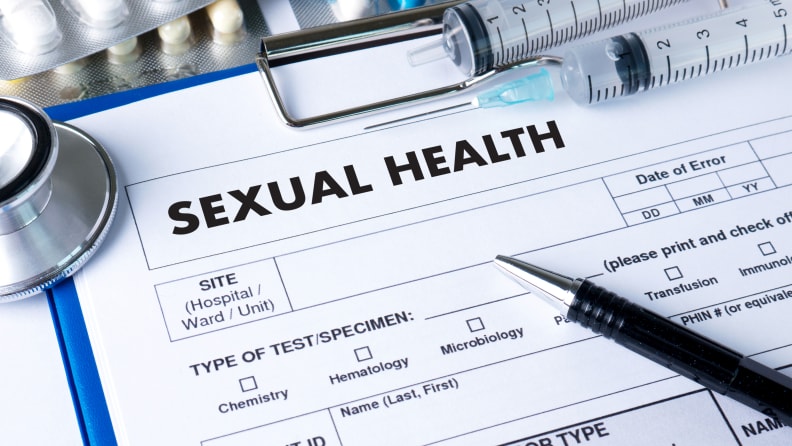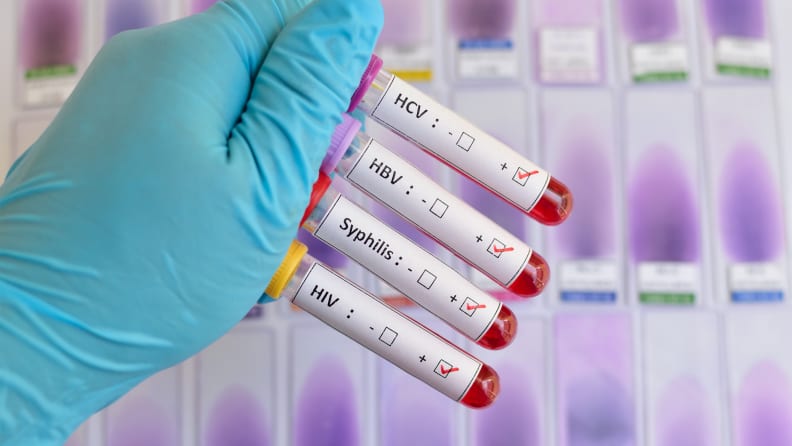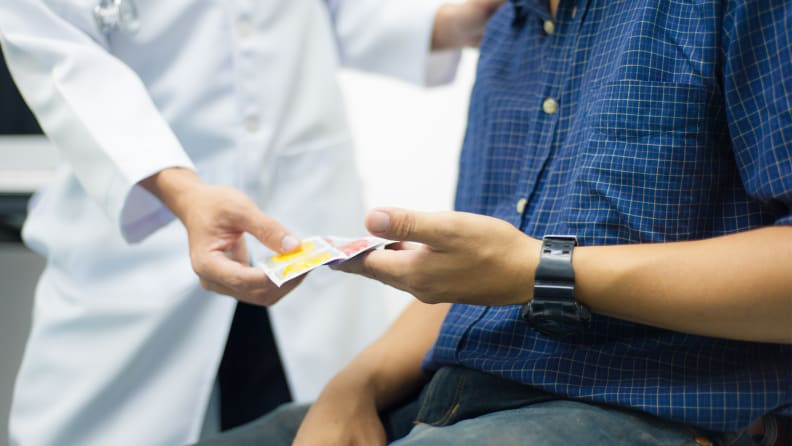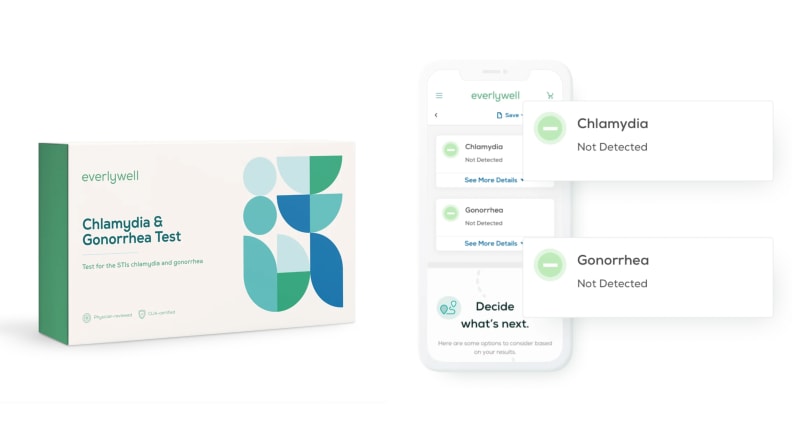Yes, you can test yourself for STIs at home—but should you?
It’s not exactly fun, but scheduling annual exams for sexually transmitted infections (STIs) is an important part of maintaining overall health, one that goes hand-in-hand with being a conscientious lover or potential sexual partner. But it can be difficult to get a doctor’s appointment immediately in these COVID times. Fortunately, there’s a way to ensure pre- or post-coital peace of mind at home and avoid insurance fees associated with an office visit.
Home STI tests can detect a variety of bacterial and viral infections, such as chlamydia, gonorrhea, syphilis, even HIV. They can be purchased at the pharmacy or ordered online and mailed for a discrete, contact-free experience. But before rushing off to the nearest pharmacy or clicking “add to cart,” here’s what to know about home STI tests.
What are home STI tests, and who are they suitable for?

Credit: Getty Images / juststock
Home STI tests allow you to discreetly and conveniently learn your status.
Once known as STDs, sexually transmitted diseases are now referred to as STIs, to reflect the notion that compared to diseases, infections can be more mild and more easily ignored. And it’s more accurate wording: Most viral STIs are treatable, and bacterial infections are typically curable with a simple round of antibiotics.
A common misconception is that STIs can only be spread via penetrative and oral sex, but any kind of sexual contact can transmit an infection, including skin-to-skin genital contact. Therefore, STIs are a risk for anyone who has sexual contact with a new partner, and anyone whose partner may have sexual contact with anyone else. The group at greatest risk are young people (who are presumably newly sexual active) between ages 15 to 24, whom the CDC estimates account for almost half of the more than 20 million new STI cases per year. But cases among older adults are also growing, for two reasons: One, HPV—the virus that can cause cervical cancer—can lie dormant in the body for years only to become “reactivated” with menopause-related hormone change and immune system fluctuations, and two, because people cease to use birth control once the risk of pregnancy is no more. But using condoms (male or female-style) isn’t only for preventing pregnancy: This barrier method of contraception is the only one that can also make sex safer against STIs.
For anyone who wants to know their STI status, home STI tests allow you to check for common infections such as chlamydia, gonorrhea, hepatitis, and herpes yourself. Many companies sell “panels” that screen for multiple infections at once, though some offer singular STI tests, which are helpful if you suspect you may have been exposed but don’t show any symptoms that would send you to the doctor. The cost isn’t nothing: They range from $100 to $300, depending on how many infections they test for, but this could still be less expensive than lab testing for those without insurance.
Depending on the manufacturer, a vaginal swab, blood sample via finger prick, or urine sample via a tube is required, which you collect and mail to a lab in an unmarked package. Users may choose to receive their results via email, by phone, or on the company’s app or website. When there’s a positive result, some brands have a network of physicians who can prescribe initial treatment, though it’s important to follow up with a primary care physician to discuss any ongoing treatment.
How accurate are home STI tests?

Credit: Getty Images / jarun011
Early research shows home STI tests are just as effective as typical in-person testing.
While a false positive test result—which shows the presence of an infection where there is none—would be frightening, false negatives are more serious, because it means an infection is present but undetected. Thankfully, studies have shown that at-home STI tests have both low false negative rates and high true positive rates, meaning the chance of an inaccurate result is slim. “More research is needed, but early data shows that at-home tests appear to be just as reliable as in-clinic testing,” says Brittany Robles, OBGYN.
Are home STI tests safe?

Credit: Getty Images / Wasan Tita
Make sure to consult your primary care physician about possible treatments following a positive result.
Home STI tests are safe for almost everyone. They’re a quick, convenient option for those who may not be able to see a doctor in a timely manner, and may also be less costly for those who don’t have health insurance. They can also offer more privacy for those who don’t feel comfortable getting tested at a facility. They’re minimally invasive and generally considered safe by medical professionals, so long as users follow the instructions and follow through with any treatment recommended after a positive result, according to Robles.
The biggest variable when taking a home STI test is improper sample collection—which could lead to inaccurate or inconclusive results—so it’s important to thoroughly follow the directions.
When should you see a doctor?

Credit: Getty Images / Wavebreakmedia
If you’re already having STI symptoms, skip the home test and see your doctor immediately.
For some people, receiving a positive test result could come as a shock, and some may feel more comfortable being able to immediately discuss results with a physician, especially when it comes to more serious infections that require longer term treatment such as HIV or Hepatitis B.
Additionally, if you are unable to collect and send off your sample as instructed, or if you’re already showing serious symptoms, you may want to skip the home test and consult a professional. “Patients who are unable to reliably adhere to the protocol of self-collection, specimen return, and follow-up should not use an at-home STI test,” Robles says. “Also, patients with signs of infection, such as fevers, chills, and foul-smelling discharge should not rely on home testing and receive medical attention right away.”
Where can you buy home STI tests?

Credit: Everlywell
You can find home STI tests online or at your local pharmacy.
Home STI tests are available online through retailers like CVS and Walmart, or directly from the manufacturer’s website. Some popular brands include Everlywell, Nurx, and Let’s Get Checked.
If you have insurance but prefer the privacy of a home test, you may be able to submit a claim to your insurance company to get fully or partially reimbursed. For a low- or no-cost option, Planned Parenthood may offer home STI testing in your state.
The product experts at Reviewed have all your shopping needs covered. Follow Reviewed on Facebook, Twitter, Instagram, TikTok, or Flipboard for the latest deals, product reviews, and more.
Prices were accurate at the time this article was published but may change over time.
For all the latest Lifestyle News Click Here
For the latest news and updates, follow us on Google News.

